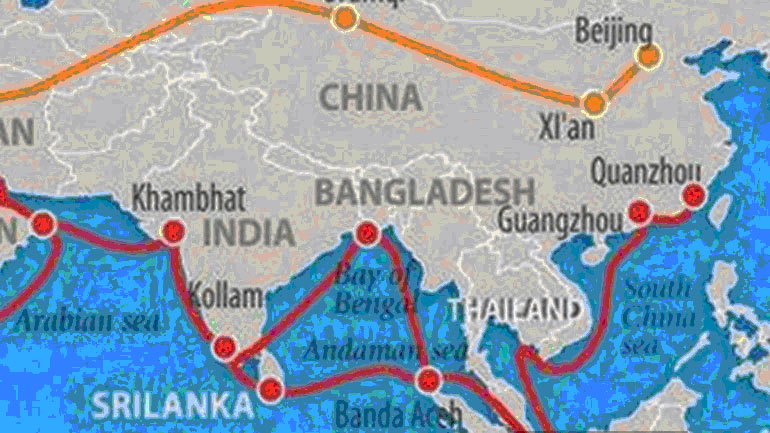When Chinese Maps Showed Aksai Chin, Pok In India
24 June, 2020
China has used cartography to further its political and geostrategic agenda. It releases maps to spell a narrative to suit its immediate or long-term agenda. On a couple of occasions in the past two years, it has shown correct maps of India.
It was in April 2019 when China was hosting the second edition of the Belt and Road Initiative (BRI) in Beijing in the final week of April. The map used for unveiling of the BRI plan showed Aksai Chin part of India.
The map had been released by the commerce ministry of China. It showed entire Jammu and Kashmir (now Union Territories of J&K and Ladakh) and Arunachal Pradesh as Indian territories.
The map immediately set off speculation as to whether it was an attempt by the Chinese government to placate India to take part in the BRI plan of the Xi Jinping administration. This was particularly interesting as China has been very specific about cartographic diplomacy.
It also came as a surprise because China had only recently destroyed thousands of maps that showed Arunachal Pradesh as Indian territory. China normally shows Arunachal Pradesh as South Tibet and lays claim over it.
Though India boycotted all BRI events, this edition presented India as a partner. However, the correct depiction of Aksai Chin and PoK turned out to be a “faux pas” for China, which removed the map on its BRI website that showed the legal position of India correctly in Ladakh, J&K and Arunachal Pradesh.
This was, however, not the first time that China showed the correct map of India. In 2018, reporting a terror attack on Chinese consulate, China’s state television used a map different from the one it normally uses to depict the status of PoK.
In the new map, state-run CGTN showed Pakistan-occupied Kashmir as part of Jammu and Kashmir as it existed before bifurcation in August 2019. This was significant as even though Pakistan has resisted from claiming entire PoK as its own territory, China has been depicting as Pakistani territory.
China has made massive investments in PoK ignoring strong objections from India. It has taken out $60 billion China Pakistan Economic Corridor (CPEC) through PoK. Its massive investment in CPEC has been one of the reasons why China is alarmed by India’s push for infrastructure building in Ladakh leading recently to violent faceoff in the Galwan Valley.
Still, the tightly controlled state media went ahead with a map that showed the correct legal position of the PoK. However, like the BRI website, the state media went back to the map that it aired previously.
Cartography has been an important tool for Chinese expansionist moves since the Communist Party of China (CPC) established its control over China.
It is through cartographic designs, China staked claim over Arunachal Pradesh after conquering Tibet. In fact, in 1958, it released a map showing large parts of Bhutan as its own territory.
In Aksai Chin, China advanced its claim to a new line in 1956 and then again in 1960, after having virtually accepted India’s position in 1950, when Indian Constitution declared all British Indian territories as Indian under the India Independence Act of 1947.
The cartographic war has only gained momentum under Xi Jinping, especially since 2014 – two years after he took control of the party and one year after he became the Chinese president.
China released a whole “new” series of maps showing explicit territorial claims over Taiwan, islands of the Spartly and Paracel in the South China Sea. In the new maps, China has laid sovereign claim on the entire South China Sea with a 10-dash line.
In 2017, China took a bizarre step of naming half-a-dozen places in Arunachal Pradesh in its maps and record following a visit by the Dalai Lama, the spiritual head of the Tibetans.
In the same vein, China has laid claim over entire Galwan Valley. Galwan river originates in Aksai Chin and flows towards Ladakh to drain into Shyok which ultimately empties into the Indus river.
Through the 1950s, China claimed only areas around the source of Galwan. By 1960, it advanced its claim to the current position in maps and in entirety in verbal claims.
Now, China lays territorial claims to the point of confluence of Galwan and Shyok. This is understood to be arising out of Chinese fear of India attaining a position where it can compromise Chinese interest in the BRI and CPEC passing through Indian territories occupied by China and Pakistan.
Courtesy: Opera News/ indiatoday.in

